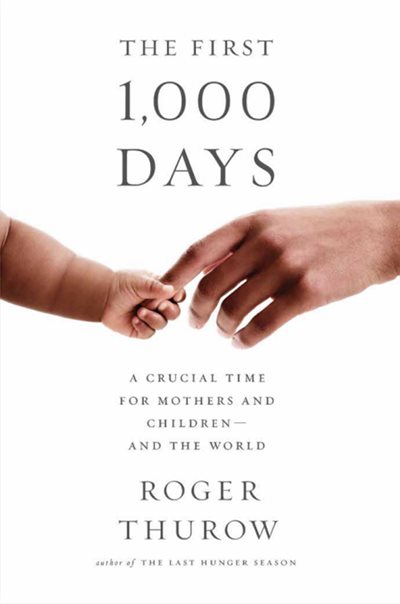A new approach to development
The push for a focus on nutrition, especially in the first 1,000 days of life from the beginning of pregnancy to the second birthday of a child, has vaulted to the fore of international development discussions. The United Nations has declared this the Decade of Action on Nutrition (from 2016–2025), with the goal of eradicating hunger and malnutrition in all its forms and reducing the burden of diet-related noncommunicable diseases in all age groups. It is designed to support governments to meet their many nutrition-related commitments within the 2030 Agenda for Sustainable Development, including Sustainable Development Goal 2 of ending hunger.
The rise of the movement
The importance of focusing on nutrition in the first 1,000 days of life didn’t really register until the dawn of the twenty-first century. Agriculture’s practitioners were pursuing the production of ever-increasing yields. The health ministries of the world were in a constant chase of dollars to combat the disease du jour, desperately scrounging for the resources to vaccinate mothers and children. World health and development organizations were focused on getting children into school—universal primary education—as the holy grail of successful development.
Interventions to prevent undernutrition centered mostly on children already in school. Ensuring proper brain growth and cognitive development in the first 1,000 days—so children are actually capable of learning once they get there—had largely been neglected. In past decades, less than 1 percent of total international development aid was spent on nutrition.
Yet as a new century began, threats to the planet were piling up: overpopulation, water shortages, armed conflict, climate change, infectious disease, chronic disease, diminishing biodiversity, environmental degradation, an increasing tempo of natural disasters. This sparked a challenge to rethink how the world could best prioritize and tackle its problems with the limited resources available. A new focus on nutrition emerged out of this challenge and has been gaining strength ever since.
Where the movement stands today
Nearly two decades later, global spending on nutrition has increased to nearly US$4 billion annually, with about US$3 billion coming from national governments and US$1 billion from other donors. Childhood stunting was on the decline, falling to about 22 percent of all children under five years of age in 2019 from 39 percent in 1990, but still not rapidly enough. The World Health Assembly goal is a 40 percent reduction in the number of stunted children, which would be about 100 million in 2025 (down from about 170 million). In 2019 there were still about 145 million stunted children worldwide.
Progress on reducing childhood wasting (severe underweight for age) has been even slower. With a target of 5 percent of children under five, the current wasting rate is 7 percent, down just slightly from about 8 percent when the goals were set. The effort to achieve a 50 percent reduction of anemia in women of reproductive age has gone in reverse as well. The current prevalence is about 33 percent, far from the goal of 14 percent.
This was before the coronavirus pandemic swiftly became a nutrition crisis across the globe as economies shut down, jobs were lost, food supply chains and health systems were disrupted, schools providing vital child feeding programs were closed, and access to nutritious food became more problematic. The World Food Programme warns that an additional 265 million people could be pushed to the brink of starvation by the end of 2020. That means there will be more malnourished and anemic moms and more children suffering from stunting and wasting. The Lancet medical journal published a new series of reports in mid-2020 predicting that without timely action, an additional 6.7 million children will suffer from wasting this year—a 14.3 percent increase—due to COVID-19-related economic disruptions, and nearly 130,000 children under five will die due to this impact and reduced nutrition services.
Clearly, much more needs to be done on the nutrition front. While investment has increased substantially, it is still short of the US$7 billion annually needed to reach the Global Nutrition Goals set by the World Health Assembly in 2012. As a result, despite some quick early progress, the world is currently behind pace of meeting its 2025 targets. If COVID-19 sends child stunting and wasting rates rising again, the impacts of the pandemic will be carried far into the future.
Sources: Global Nutrition Report, Scaling Up Nutrition (SUN), World Health Assembly
View the organizations engaged in the 1,000 days efforts.

